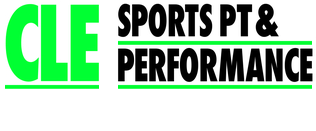Cadence has been “a thing” in the running community for a few years now. Among all things tech-lovers, data junkies, or sports science nerds like myself can track, this is one that can be easily monitored on a Garmin or other GPS device. (And for all of my fellow sports science people, this 2016 study showed that using a … Read More
Slow carb, low carb, no carb?
Ketogenic and Paleo eating plans are the trendy diets right now, especially among active people. Because of that, “carb” has become a dirty word. I can’t tell you how many endurance athletes I work with that have put themselves on low carb diets. (Spoiler alert- training rarely goes well after that). Before we get too far, I need to say … Read More
Dehydration: the simple mistake hurting your training. Part 1 in a series on the importance of the body's fluid balance.
Thirst is our bodies’ signal that we need more fluid. But sometimes there’s a “lag” in this signal – dehydration may happen before we become thirsty. Or we miss these thirst cues because we aren’t aware of them. I made this mistake due to years of conditioning myself to “not need water breaks” when I played college soccer because … Read More
Research Roundup: Fatigue, Arthritis, In-Season Strength Training Week of May 30
May 30, 2016: What CLE Sports PT is reading to give athletes #BETTER care Should player fatigue be the focus of injury prevention strategies for international rugby sevens tournaments? During the Rugby Sevens World Series, much more injuries seen in the second half of matches. The proportion of injuries also increased as the tournament went on- probably due to fatigue. The Relationship of Foot Strike Pattern, Shoe Type, … Read More
Form Running or Interval Training- Which is More Effective?
Most runners utilize interval training, or alternating short and intense running intervals with recovery periods, to improve speed, endurance, motivation, and even to burn more fat in workouts. Running form drills are another method long utilized by track coaches to improve performance. These drills are increasingly popular among recreational runners to help decrease injuries from technique. But do they really help? This … Read More
What is Running Economy and Does Stretching Improve it?
Running economy has been called the “secret” to running faster and farther in a race. It’s basically how efficiently your body uses oxygen. Think of two runners in a race, neck-and-neck during the last mile. One runner is breathing normally and the other is gasping for air. The runner who isn’t sucking wind has the greater running economy and will likely win. … Read More
Research Roundup: Improve Your Soccer Performance With Plyometrics and Sprint Training
Ever wondered how to take your soccer skills to the next level? Footskills and tactical training are important, but adding plyometrics and sprint training give you the explosiveness to beat a defender to the ball. This week’s study from the Journal of Strength and Conditioning shows the effect of this training on youth soccer players. The researchers divided young … Read More
Research Roundup: All About the Glutes
The glutes- everyone’s favorite muscle. Let’s be honest- there’s no song called “I like big calves and I cannot lie.” Or “All about that neck” (no treble!). But strong glutes don’t just look nice in jeans- they prevent injury, improve performance, and increase running speed. Sadly, for the amount of attention we give our butts, the majority of us … Read More
RESEARCH ROUNDUP: Why Proper Form matters for Strength Training and Running
This week’s pair of articles are from the Journal of Orthopaedic and Sports Physical Therapy. The first one discusses the effect of posture on a commonly used hip strengthening exercise. The second talks about running gait re-training which is becoming more common in rehab and prevention of running injuries. Enjoy the new knowledge below and contact CLE Sports PT with any … Read More
Movement Analysis is Essential for Rehab and Performance
A few months ago, Sports Illustrated profiled Dr. Marcus Elliott and his sports motion analysis lab at P3. Motion analysis can screen for injuries before they happen or help to determine when an athlete is ready to return to the field. It’s one of the most powerful tools in sports medicine today. Athletes can undergo motion analysis without the cost … Read More








You must be logged in to post a comment.